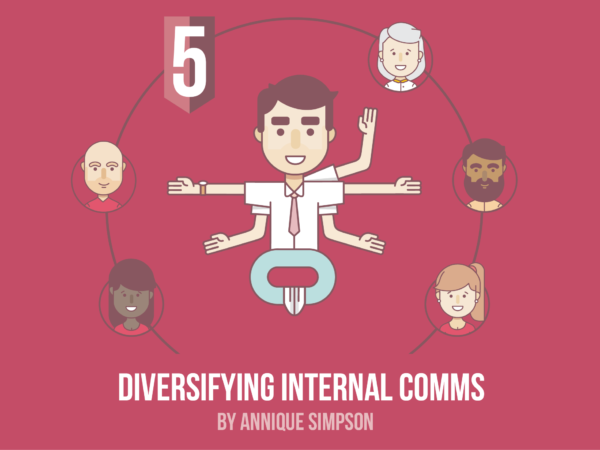
This post is brought to you by guest author Mariana Burbela, who’s bringing her knowledge of mobile apps – and how they can significantly boost employee productivity – to the H&H blog
Mobile apps can be a boon to employee productivity as well as efficiency. And today, mobility means a lot for business. It has become a powerful business strategy that cannot be overlooked anymore. Employee mobility leads to a 30% increase in workflow, and improves productivity.
Of course, it’s easy to buy smartphones and tablets for everyone in your organisation, or enlist a developer to create a bespoke mobile app. But is the game worth the candle?
The benefits of mobility
Mobility has a lot to offer for today’s organisations, not least improvements in efficiency across the board. Let’s take a closer look at how businesses can benefit from using mobile apps:
1. Quick and easy access to organisational data from anywhere (including customer data, inventory information, etc.)
2. Allows employees to work remotely and gives them greater working flexibility
3. Enables instant access to dashboards and reports
4. Affords a higher level of data security
5. Increases operating speed
Thinking specifically of one type of organisational mobile app – performance management tools – it is necessary to point out that these enable easy regular appraisals, checkpoints, and plenty of other features to help run your organisation effectively.
Moreover, giving employees a greater amount of mobility and flexibility can do wonders for improving employee engagement. It allows employees to work around personal commitments, enables them to work when they feel at their most productive, and frees them from the rigid structure of the 9-5 working day. It also means they can apply the time they’d normally be commuting to the office to more important tasks.
And best of all – flexibility can increase employee happiness. In fact, 82% of employees say they would be more loyal to their organisation if they had flexible working options.

So the big message is – mobile apps and cloud-based software solutions allow for a much greater level of productivity and efficiency, resulting in larger outputs, more results, and a more effective bottom line.
So you’ve been won over by the advantages of mobility and you’re eager to make the switch to mobile. Just one question – how do you best integrate mobile apps and technology into your organisation, to ensure maximum benefit?
I’ve rounded up 4 best practices you need to consider before you introduce mobile working into your organisation, to get your employees on board.
4 things to consider when making the switch to mobile apps to boost employee productivity
1. Establish a policy for effective mobile app use
When introducing a new mobile app or technology into your organisation, you need to establish a clear and transparent policy so employees understand how they should use it in the workplace. To work out a good policy, find the answers to these questions:
1. What activities are allowed?
2. What activities are not allowed?
3. What platforms should be supported?
4. What apps and settings should be restricted?
5. What should employees do if their devices are lost or damaged?
What it comes to fleshing out an effective policy for usage, be succinct and open with employees so they’re fully in the know about how to best access and utilise mobile technology within the organisation. You may change your policy over time too, so make sure that employees are notified about any alterations. Consider implementing push notifications that automatically alert employees to new information or changes.
2. Allow access to the right mobile apps
Do your best to provide employees with the right services and apps they need to do their jobs effectively, since not all the workplace tools out there are free. But when considering adding more mobile apps to your organisation’s arsenal, remember that some free cloud-based tools can pose a huge risk to the security of your data.
However, it’s easy to underestimate the risks. That’s why it’s also important to encourage a culture of knowledge around data security, starting with employees – so no-one inadvertently makes a costly mistake. When developing a new mobile app, it’s crucial to remember to strike a balance between ease of functionality and data security – ensuring the former does not impair the latter.
Also keep in mind that different employee groups may require different mobile apps for their work. But cloud-based software models like SaaS (Software as a Service) and PaaS (Platform as a Service) offer great flexibility and useful functions for every type of mobile app.

3. Focus on your employees’ needs, and avoid Magpie Syndrome
Mobile technology is advancing incredibly quickly – new devices, operating systems, and software developments like Augmented Reality are being unleashed at a rapid pace. It can be daunting to consider getting to grips with and bringing new, cutting-edge technologies into your organisation – but sticking with the old won’t result in anything good for your business.
The Agile approach – being open to new technologies as they come along – is ideally suited to today’s ever-changing mobile world, as new innovations are cropping up all the time, and old technology is being continuously improved, to our advantage.
But you must remember your primary concern as an organisational leader is to focus on the mobile needs of your employees – not to get caught up in the thrill of implementing new, shiny technologies for the sake of it (Magpie Syndrome). Use analytics to get an accurate picture of how your employees are really using the mobile technologies you introduce, so you know what’s working and what’s not.
4. Think about how you can use mobile apps to improve your internal comms
Mobile apps can also revolutionise the way you communicate with your employees. Employees can access information from anywhere, and mobile apps can host a wealth of data that’s important for them to know.
With employees favouring communication technologies like emails, many organisations are opting for mobile apps which make it easy to send comms and receive notifications, as well as distribute relevant information.
But the good news for organisational leaders and internal comms professionals is that there’s no need to agonise over developing your own employee communication app. You can simply take advantage of existing ones, like Slack or Skype.
But remember – these apps are meaningless unless employees actually use them. Make sure you include getting employee buy-in when developing a strategy for implementation.

Stop waiting – take action
Mobile technology has become an integral part of our day-to-day life, so why not make it an essential component of your organisation? Luckily, there are many apps you can get started with, some of which I’ve mentioned in this article. By investing time and effort into organisational mobility, you can reap the benefits of happy and productive employees.
Meet the author

Mariana Burbela
I am a content crafter and technical writer at IDAP Group. I spend my time researching, analysing, and providing valuable insights on how mobile apps can transform today’s world.
Follow IDAP on Facebook or on Twitter.
Get in touch today to find out how we could help you transform your leaders and managers from average, to exceptional!
Got a brilliant idea you simply can’t keep to yourself?
We’re always looking for fresh faces to help us further the IC conversation by writing guest articles for our blog. If you want to make your voice heard on internal comms, employee engagement, change management or leadership development, we’d love it if you got in touch!












